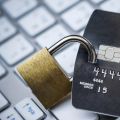Safe on the Internet
If you are logged on to the Windows 2000 or Windows XP operating systems with the user rights of an administrator, your computer may be at risk from "Trojan horses", for example, simply by visiting a website. Even if not all malware programs can be thwarted in this way, you should not surf the Internet with administrator rights. We tell you what else you should think about.
Operating systems such as Windows, Linux etc. offer you the option of restricting user rights. Malicious programs are often executed with the extensive administrative rights of the user currently logged in.
If you are logged in as a user with restricted rights, you can prevent or limit damage. It is also possible to run only individual programs, such as the Internet browser, with restricted rights.
A firewall controls the access of your system and your programs to the Internet. When configured correctly, it protects your computer or network from malware or hackers.
In addition to software firewalls, which only protect the computer on which they are installed, there are also hardware firewalls that can protect several computers or your network directly at the point of access to the Internet. While a constantly updated, software-based firewall is a necessity, the combination of hardware and software firewalls is a recommended option.
Modern anti-virus programs not only protect your computer against actual viruses, but also against a variety of Trojans, worms and other malware. An essential prerequisite for effective protection against viruses is the constant updating of the anti-virus software via the live update function.
Almost every day, security vulnerabilities in operating systems and programs become known that can be exploited by malware or hackers. Software manufacturers endeavor to fix security gaps as quickly as possible with patches and updates. You can therefore only achieve optimum protection if you constantly keep your software (operating system and application programs) up to date. You will get the fastest response to new malware if you allow updates automatically.
The default settings of some browsers are designed for maximum functionality and therefore open gaps that can be exploited by malware, such as JavaScript and other plug-ins. Many providers have already recognized this problem and offer user-friendly controls that allow individual configurations. For example, you can set whether scripts are executed automatically or whether they may only be executed by certain pages according to rules you have customized.
The majority of malware is spread via emails or their attachments. Deactivate the automatic email preview. Better still, do not allow emails in html format in your email client, but only as text emails. Never carelessly open e-mails or attachments whose sender you do not know or trust. If in doubt, delete the email or contact them personally if possible.
Office applications offer the option of macro programming, which can be used to automate recurring tasks. However, macros can also be used to inject and execute malicious code. Therefore, configure your Office applications so that macros are only allowed when prompted.
Wirelessly connected to the internet at home or at work, Wi-Fi makes it possible. PCs or laptops and routers emit radio waves whose transmission range usually extends beyond your own four walls - and your neighbor "reads" them. We tell you how you can also secure your data in wireless networks.
WLAN computers in the neighborhood receive your radio waves and hackers can surf at the expense of others, easily access other people's hard drives and do whatever they want with their "stolen identity". Therefore, follow these basic tips:
Use encryption
- Wireless routers and adapters can encrypt the transmitted data. Cracking the latest encryption technology (so-called WPA2 encryption) requires a lot of time and technical effort. Older encryption technology (so-called WEP encryption) should no longer be used, as it can be decrypted in a short time using generally available means.
- For older hardware that does not support WPA2 encryption as delivered, it is often possible to use this encryption by updating the software on the manufacturer's website. The key used should preferably consist of numbers, letters and special characters.
Set up the WLAN router correctly
- Change the router password. If this is not done, anyone with administrator rights can access the router with the manufacturer's default password and configure it as they wish.
Adjust the transmission strength of your router
- Adjust the transmission power of the Wi-Fi router so that you can still receive signals without any problems, but the transmission power does not go too far beyond this
Adjust Switch your WLAN to be invisible to others and limit access to the transmission strength of your router
- Wireless routers broadcast network names that are visible to everyone else "on the network". Switch off this function (known as broadcast). This means that your Wi-Fi network is only visible to you. Making it visible to unauthorized third parties is now only possible using special software.
Adjust your WLAN so that it is invisible to others and limit the access optionsThe transmission strength of your routerOnly use wireless connections with encryption activated. Use the WPA2 method. Restrict access to your wireless network by setting permitted MAC addresses.
You can find more information about this on
Use a file system (such as NTFS) that allows you to restrict access to files and folders.
Carry out regular data backups. If your system is damaged despite your security measures, you can restore the status of the last backup, including your personal files, in a short time.
Further tips and recommendations can be found at
https://www.bsi-fuer-buerger.de/BSIFB/DE/DigitaleGesellschaft/digitaleGesellschaft_node.html
http://www.polizei-beratung.de/themen-und-tipps/gefahren-im-internet.html
The cell phone accompanies us everywhere we go these days. But we forget that it is a fully-fledged PC in miniature format. It needs to be backed up just as much as your home computer or laptop.
- Download only secure apps from verified stores
- Check the access permissions of the apps
http://www.polizei-beratung.de/themen-und-tipps/gefahren-im-internet/smartphone-sicherheit.html



